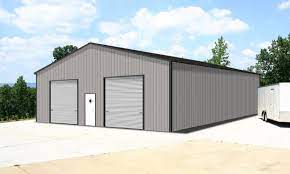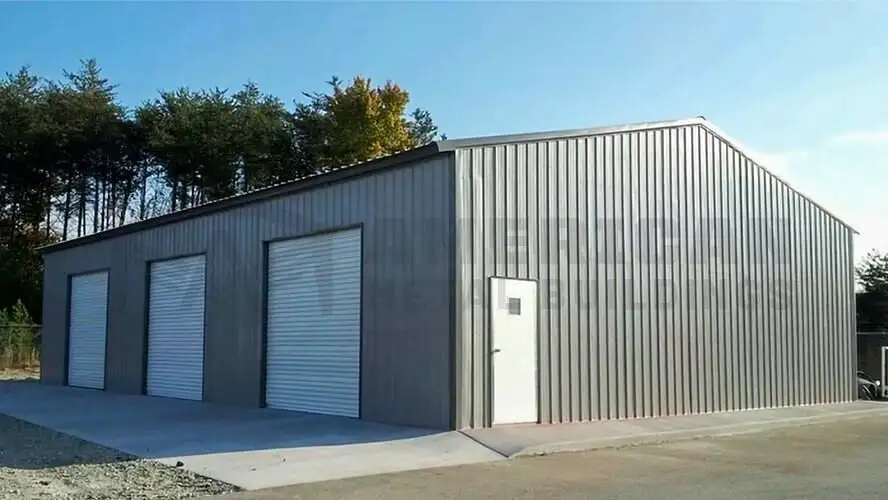Introduction to Metal Buildings
Metal buildings are structures primarily constructed from steel or other metal materials, offering a versatile and durable solution for a variety of applications. These buildings may range from large warehouses and industrial complexes to smaller agricultural facilities and residential garages. The inherent strength and durability of metal make it an ideal choice for construction, allowing for longer spans and reduced support requirements compared to traditional building materials.
The materials commonly used in the construction of metal buildings include steel, aluminum, and occasionally, galvanized metal. Steel, in particular, is favored for its high strength-to-weight ratio, corrosion resistance, and cost-effectiveness. With advancements in metallurgy and engineering, modern metal buildings can be designed to withstand extreme weather conditions, making them suitable for a diverse range of climates and environments.
The history of metal buildings dates back to the late 19th century, when industrialization drove the adoption of steel frames in construction. Initially, metal was used primarily for commercial and industrial projects, but as technology advanced, the application of metal structures expanded. By the mid-20th century, metal buildings became common in agriculture, particularly for barns and storage units, due to their affordability and low maintenance needs. Today, industries such as aviation, retail, and even residential housing are increasingly utilizing metal building systems.
Furthermore, the rise in sustainability awareness has contributed to the popularity of metal buildings. Their recyclability, energy efficiency through insulation, and overall longevity position them as an eco-friendlier alternative to traditional construction materials. In various sectors, the adaptability of metal structures continues to be recognized, catering to the evolving needs of consumers and developers alike.
Benefits of Choosing Metal Buildings
Metal buildings have gained significant popularity due to their numerous advantages, making them a preferred choice for various applications, from residential homes to commercial structures. One of the primary benefits of metal buildings is their exceptional durability and longevity. Unlike traditional materials such as wood, metal structures are less susceptible to decay, pests, and warping. This resilience translates into a longer lifespan, providing property owners with considerable value over time.
Weather resistance is another advantage that sets metal buildings apart. They can withstand extreme weather conditions, including heavy winds, snow loads, and heavy rain. The durability of metal ensures that these structures maintain their integrity and performance despite harsh environmental factors. Additionally, metal buildings are fire-resistant, which enhances safety for occupants and reduces fire insurance costs, offering peace of mind to property owners.
From a financial perspective, metal buildings tend to incur lower maintenance costs compared to conventional buildings. The materials used in metal construction require minimal upkeep, leading to savings on repairs and maintenance in the long run. Furthermore, many modern metal structures incorporate energy-efficient designs. Insulation options and reflective surfaces contribute to lowering energy consumption, making these buildings more environmentally friendly. This energy efficiency is particularly beneficial for businesses aiming to reduce overhead costs related to heating and cooling.
Finally, the versatility of metal buildings allows for a wide range of applications, from warehouses and industrial facilities to personalized residential homes. Customization options enable property owners to tailor designs according to their specific needs, further enhancing the appeal of metal structures. Overall, the various benefits of choosing metal buildings make them a compelling option for anyone considering a new construction project.

Applications of Metal Buildings
Metal buildings have gained significant traction across various industries due to their diverse applications and inherent benefits. One prominent sector utilizing these structures is agriculture. Farmers and agricultural businesses have increasingly adopted metal buildings for barns, equipment storage, and livestock shelters. The durability and low maintenance costs associated with metal provide a practical solution for protecting valuable equipment and ensuring safe environments for livestock. These structures can be tailored to meet the specific needs of farmers, allowing for efficiency in operations and storage capabilities.
In the commercial sector, metal buildings serve as ideal solutions for a myriad of applications. Warehouses, distribution centers, and retail spaces benefit greatly from the robust nature of metal construction. These buildings are often designed to maximize usable space and can be easily expanded or modified to accommodate growth, making them particularly attractive for businesses aiming to scale operations. Furthermore, the speed of construction offered by prefabricated metal structures minimizes downtime, enabling businesses to resume operations swiftly.
Another growing trend within the realm of metal buildings is their application in residential spaces. Custom metal homes have emerged as a popular choice for builders and homeowners alike. The adaptability of metal allows for innovative architectural designs, offering modern aesthetics while maintaining structural integrity and sustainability. Industrial sites are also beginning to incorporate metal buildings for workshops, machinery storage, and even offices, demonstrating the versatility of these structures across varying environments.
This wide range of applications showcases the growing acceptance of metal buildings, as they can meet the unique demands of different sectors and purposes. Their customizable nature and robust performance make them an ideal choice for those looking to invest in durable, efficient, and sustainable structures.
Choosing the Right Metal Building for Your Needs
When selecting a metal building, understanding your specific requirements is paramount. Begin by assessing the size of the structure needed—consider the intended purpose, whether it be for storage, commercial use, or as a recreational space. The space requirements will influence not only dimensions but also the layout and design of the building. For instance, a warehouse may require open space, while a workshop might necessitate individual work areas.
Next, deliberate on the design features and customization options available. Metal buildings offer a range of designs, from simple utility structures to more complex, aesthetically pleasing designs suitable for office spaces or retail purposes. Customization can include additional doors, windows, insulation, and even specific color choices, enhancing both functionality and visual appeal. Ensure that the design aligns with local zoning laws, as this might impact the allowable modifications.
Permitting processes are another critical component in the selection of a metal building. Before construction begins, check with local authorities to understand the necessary permits and regulations. Each municipality has different requirements regarding building codes, which can influence the design, materials used, and overall size of the structure. Ensuring compliance with these regulations can prevent costly delays and adjustments during the building process.
Furthermore, it is essential to estimate potential costs accurately. Metal buildings can be a cost-effective solution, but hidden costs such as site preparation, foundation work, and finishing touches can accumulate. To garner the most value, consult with builders and manufacturers to obtain detailed quotes that include all aspects of the construction process.
Finally, finding reputable builders and manufacturers plays a crucial role in your selection. Researching options in your area, reading customer testimonials, and checking previous work can help you make an informed choice. A reputable contractor ensures the structure is built to last and meets all local standards without compromising on quality.
In conclusion, carefully considering size, design, permitting processes, costs, and builder reputation will place you in an advantageous position when selecting the appropriate metal building for your needs. Tailoring your choices to meet your specifications will lead to satisfying outcomes, maximizing the utility and enjoyment of your future metal structure.




Leave a Reply